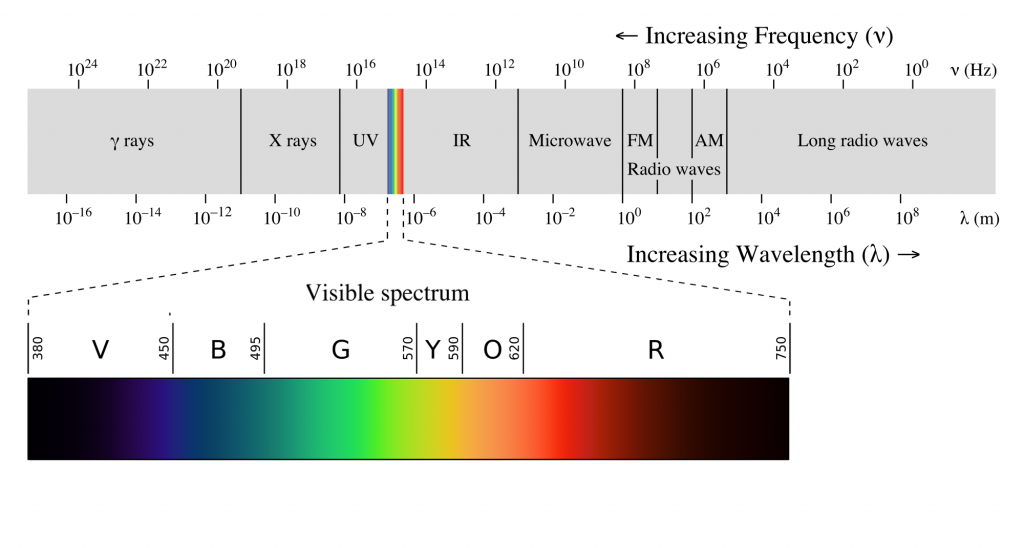Chapter 2: Light and the Eye
2.1 Physics of Light
Basic Properties of Light
Light is made up of electromagnetic energy, and can be conceptualized both as waves and as particles. We can think of light as a traveling wave; because there are tiny changes in the local electric and magnetic fields as the wave travels. The rate at which the fields rise and fall is the wave’s frequency. However, more typically when we talk about light, we describe a light wave in terms of its wavelength, which is the distance between the peaks of the wave. Our environments contains a lot of electromagnetic radiation with different wavelengths, but we are only able to see a tiny portion of them, we call describe these wavelengths (400 to 700 nanometers) as belonging to the visible spectrum. These are the wavelengths of light that are absorbed by the visual receptors in the back of our eyes. We perceive light of different wavelengths to be different colors (see Figure 2.1).

Electromagnetic radiation can also be conceptualized as moving particles. The smallest amount of light that can be generated or transmitted is called a photon.
CC LICENSED CONTENT, SHARED PREVIOUSLY
Cheryl Olman PSY 3031 Detailed Outline
Provided by: University of Minnesota
Download for free at http://vision.psych.umn.edu/users/caolman/courses/PSY3031/
License of original source: CC Attribution 4.0
Adapted by: Nura Ahmed and Victoria Manchanthasouk
Schwiegerling, J. (2004). Field Guide to Visual and Ophthalmic Optics,
SPIE Press, Bellingham WA.
Retrieved from: https://spie.org/publications/fg04_p04_photoreceptors?SSO=1
CC BY-NC-SA
Adapted by: Victoria Manchanthasouk
Quiz by: Morgan Mauch
